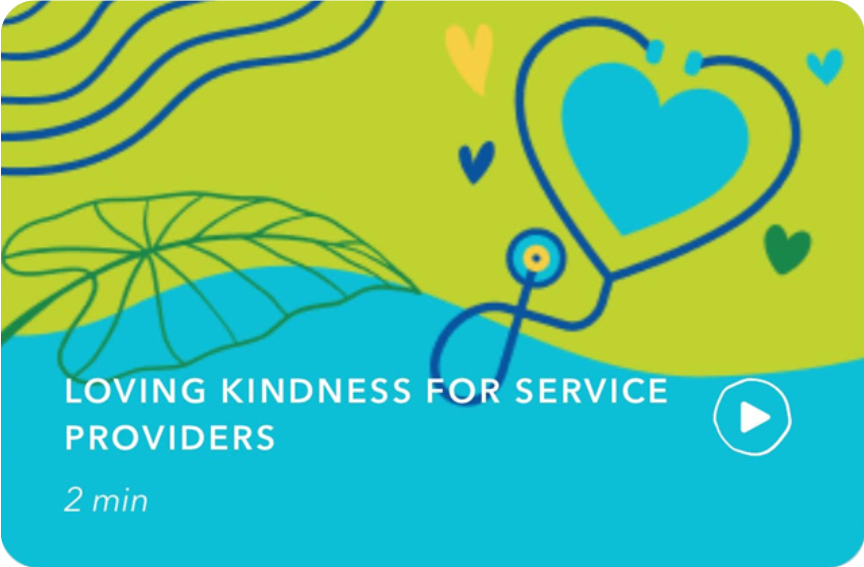Part 2: Compassion
Note: This is part 2 of a 4 part series. See Part 1 here.
Introduction:
I have a deep aspiration to bring LOVE back in to medicine. Love is not a word we use much in medicine, and for some very good reasons. It has become misunderstood or cheapened through the way it has been used and/or abused in popular discourse. At the same time, love is at the root of why many of us chose to enter the healing professions, as a calling, not just a job. Love is part of my personal definition of mindfulness (adapted from Jon Kabat-Zinn): Paying attention in a particular way, on purpose, in the present moment, and with unconditional love. We need to tend to this precious root, so that it can become a beautiful flower. Like any other living thing, if we don’t tend to it, it will wither and weaken. If this happens, we may run out of the energy and aspiration we need to sustain ourselves in this sacred work.
WHY do we love? My mentor, Dr. Kenneth Ginsburg (Adolescent Medicine Pediatrician, Children’s Hospital of Philadelphia and University of Pennsylvania) says, “We love so that people know that they’re worthy of being loved. Love can bring us energy and courage to face pain and suffering. Love can provide us connection and meaning in our work, and in our lives.
WHAT is love? This four-part series will examine what Zen Master Thich Nhat Hanh describes as the Four Elements of True Love, and how they can enrich our work in medicine. This is the first piece of the series.
| ||
"True love is made of four elements: loving kindness, compassion, joy, and inclusiveness. (Zen Nun, senior student of Thich Nhat Hanh) |
The second element of true love is compassion. For me, compassion is easy to confuse with empathy. Empathy has to do with the ability to experience what another person experiences. The science of mirror neurons has shown us that when we see a person experiencing pain (or any other emotion), the pain networks in our own brain also activate. We are hard-wired biologically for empathy! When you suffer, I suffer. That is also a mindfulness teaching of what Thich Nhat Hanh calls, “Interbeing.”
Empathy is vital for us as health professionals, but it is not enough. We do need to be able to sense directly what others are feeling – and, it can also be a double edged sword if we are not skillful in handling it. Empathy can leave us feeling drained, with burnout and secondary trauma, because we suffer as the other person suffers.
With compassion, we start with empathy as a valuable signal and source of information about what the other person is experiencing. We then add to that an intention and/or action to relieve that suffering. Thich Nhat Hanh wrote, “Compassion… is not only the desire to ease the pain of another person, but the ability to do so. You must practice deep looking in order to gain a good understanding of the nature of the suffering of the this person, in order to be able to help him or her….”
As health professionals, we attend to the technical aspects of health care, and do our best to understand the nature of a patient’s pain and illness, and diagnose and treat it as well as possible.
Sometimes we may notice that pain and suffering are not the same thing. Dr. Eric Cassell wrote that suffering is about feeling threatened by the meaning of the symptoms that a person is experiencing, not just the symptom(s) themselves. Suffering has to do with our relationship with pain, more than the pain itself. We do our best to reduce or eliminate pain with our medical treatments. At the same time, there may also be an aspect of suffering that a patient is going through that we can attend to.
As healers, we can also practice what might be considered a more spiritual aspect of health care, staying present to suffering, with an open heart. Several years ago, I heard a First Nations Elder speaking in Vancouver. She said, “When someone is hurting, just your presence is medicine.” This is the practice of mindfulness and compassion in action. If empathy is about “being inside” suffering (according the English word’s Greek roots), then compassion is the practice of “being with” suffering. We show up with our full presence, open heart, and a kind word or action, in order to accompany and bear witness to suffering, and so that no one suffers alone. 
All of this sounds like a tall order. The good news is, we all have the capacity for compassion hard-wired unto us. We can cultivate this capacity through meditation and compassionate action. You may wish to try this loving kindness meditation in our free Breathr app (in the “Meditate” section), which was inspired by meditation teacher and social worker Larry Yang.
Invitation to Contemplate: What is one small act of compassion that you shared, received, offered, or witnessed in health care in the past week? Perhaps it was with a patient, caregiver, or colleague. Take a moment to recall this situation. Who was there? How did you express or experience compassion? How did it make you and the other person(s) feel? Feel free to write some reflections in a journal, or share them with a trusted friend.